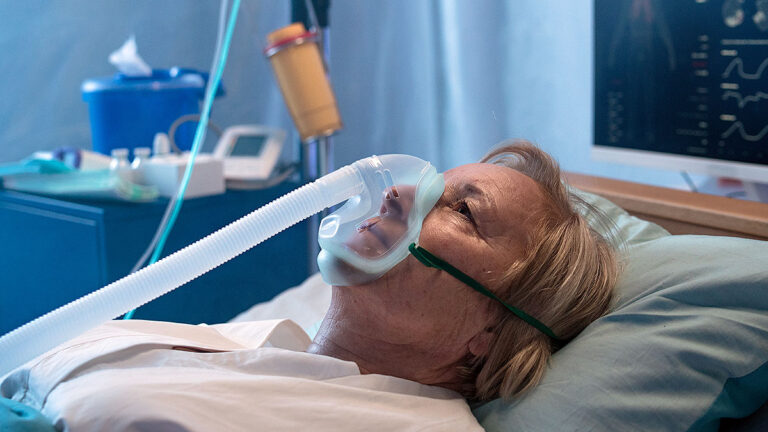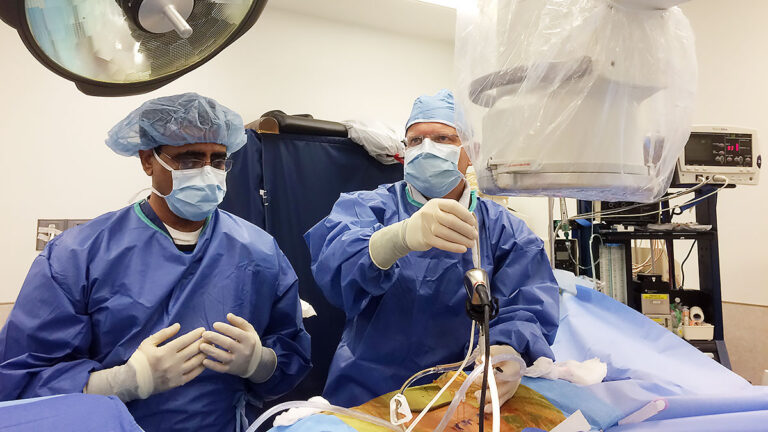Stellate ganglion block (SGB) is a type of nerve block that involves injecting medication into the stellate ganglion, a cluster of nerves located in the neck. SGB is primarily used to treat sympathetically mediated pain conditions, characterized by abnormal sympathetic nervous system activity. SGB has also been used to treat complex regional pain syndrome (CRPS) and post-traumatic stress disorder (PTSD).
The benefits of SGB include:
- Effective pain relief: SGB can provide effective pain relief for sympathetically mediated pain conditions, such as CRPS, by blocking the abnormal activity of the sympathetic nervous system.
- Reduced inflammation: SGB can help reduce inflammation in the affected area, further reducing pain and improving function.
- Improved quality of life: By providing pain relief, SGB can improve patient’s quality of life and ability to perform daily activities.
- Minimally invasive: SGB is a minimally invasive procedure that causes less pain and scarring than traditional open surgeries.
- Fewer systemic side effects: Because SGB is a targeted injection, there is less risk of systemic side effects compared to other pain management treatments.
In addition to CRPS and PTSD, SGB has been used to treat conditions such as angina, chronic pelvic pain, and phantom limb pain. SGB can be part of a comprehensive pain management plan that may include other treatments such as physical therapy, medication management, or counseling.
The mechanism of action of SGB has yet to be fully understood. Still, it is thought to involve blocking the activity of the sympathetic nervous system, which can reduce pain and inflammation in the affected area. The procedure is typically performed under local anesthesia, and patients may experience some temporary side effects such as hoarseness, difficulty swallowing, or eye dryness. These side effects usually resolve within a few hours or days after the procedure.
SGB has several potential benefits over other pain management treatments, including its minimally invasive nature, targeted injection site, and low risk of systemic side effects. SGB can also provide effective pain relief for patients who have not responded to other pain management treatments, improving their quality of life and ability to perform daily activities.
Several studies and articles support the use of SGB for the treatment of various pain conditions. For example, a 2017 review published in Pain and Therapy found that SGB is an effective treatment option for CRPS, with several studies showing significant pain relief and improved function following the procedure. The review also noted that SGB has a low risk of complications and can provide long-lasting pain relief for many patients.
Another study published in Regional Anesthesia & Pain Medicine in 2019 found that SGB effectively reduced pain and improved function in patients with chronic pelvic pain. The study noted that SGB could be a safe and effective treatment option for chronic pelvic pain, which can be challenging to manage with other treatments.
In addition to its use in pain management, SGB has also been studied as a potential treatment for other conditions, such as PTSD. A 2016 study published in the Journal of Clinical Psychopharmacology found that SGB was effective in reducing symptoms of PTSD in military veterans, with significant improvements in symptoms such as anxiety, hyperarousal, and sleep disturbance.
Overall, there is growing evidence to support the use of SGB to treat various pain conditions and other conditions, such as PTSD. While more research is needed to fully understand the mechanism of action and long-term outcomes of the procedure, SGB can be a safe and effective treatment option for many patients. It is essential to discuss the potential risks and benefits of the procedure with Doctor Nasiek to determine whether SGB is right for you.






